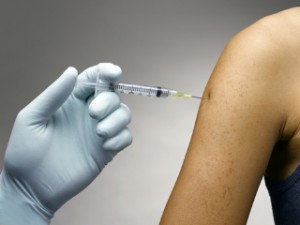An Analysis into the Latest Threat Humanity Faces
One of the leading causes for the rise of average life expectancy in the 20th century was the development of effective antibiotics. Antibiotics are defined as any compound that either kills or severely impedes the growth of bacteria. Penicillin and other antibiotics were termed ‘wonder drugs’ and they were widely used even when there was no obvious infection present. Doctors and patients considered them appropriate for almost everything. In 1998, it was estimated that there were 80 million prescriptions of antibiotics for human use, the equivalent of 12,500 tons in one year.
obvious infection present. Doctors and patients considered them appropriate for almost everything. In 1998, it was estimated that there were 80 million prescriptions of antibiotics for human use, the equivalent of 12,500 tons in one year.
The problem with antibiotic resistant bacteria is that they have an extremely strong impact on the world’s poor. Because poor people cannot keep affording to keep buying new antibiotics to combat new strains of bacteria, these antibiotic resistant bacteria eventually harm them. In countries that have poor medical facilities and health care plans, these poor people are left to suffer with these new types of bacteria. But the problem is that pharmaceutical companies aren’t investing into bringing new antibiotics into the market. Executives chose the more profitable path which is finding say an obesity drug or blood pressure drug that 10 million people take for the rest of their lives over pursuing an antibiotic that 10,000 people take for just two weeks. With no new innovation in efficient medicine being undertaken, the country enters into a stagnation period which in turn affects the economic and social development of the country.
The Infectious Diseases Society of America fears that we could slip back into a world in which we’re defenseless against bacterial diseases. While there is an agreement amongst doctors themselves that they overprescribe antibiotics, a big part of the problem is factory farms who feed low doses of antibiotics to hogs, cattle and poultry to make them grow faster. A study by the Union of Concerned Scientists found that in the United States, 70 percent of antibiotics are used to feed healthy livestock, with 14 percent more used to treat sick livestock. Only about 16 percent are used to treat humans and their pets.
There are many solutions that have the potential to be adopted and some that already have been adopted that will help combat this problem. A decrease in the number of prescription for antibiotics for small children is occurring. In addition, several countries such as the UK have rules and regulations concerning the use of antibiotics to feed livestock. It is also extremely important to use the antibiotics that have been prescribed to you. In many places, failure to finish tuberculosis prescriptions can result in jail time. We also don’t really know too much about antibiotic resistance. Pharmaceutical companies also need to play a huge part in the process of finding solutions. They need to constantly research new methods of creating antibiotics and solving ways to combat antibiotic resistant drugs.
Hopefully, antibiotic resistance can’t be shunned to the side by the Obama administration like AIDS was by the Reagan administration in the 1980’s. Action needs to be taken fast, and people who are actually taking antibiotics need to take responsibility first.
Udit Hinduja is a student at New York University double majoring in Economics and Political Science. As a Program and Research intern with the SISGI Group his focus areas are education, poverty and economic development in Asia and South America.

